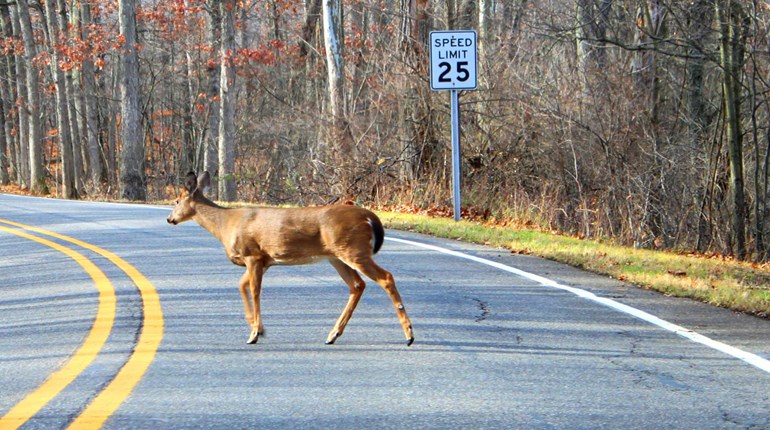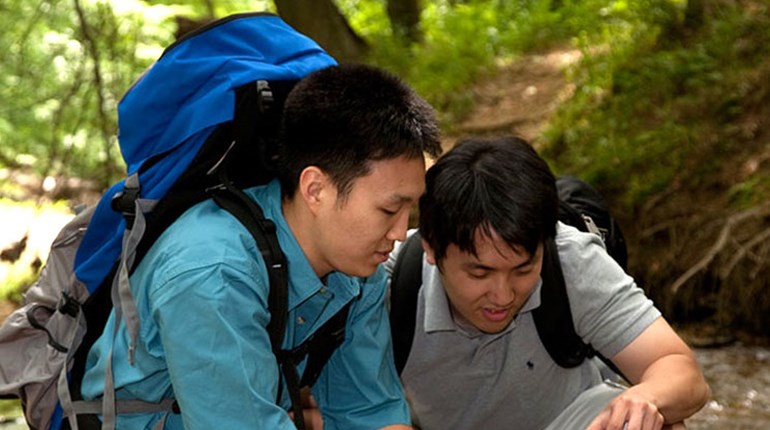
Folks who use a term like “silent sports” often imply the “non-consumptive users” in such recreation in the woods and on the water cause little harm or fright to wildlife.
These activities include hiking, camping, kayaking, photography, birdwatching, paddle-boarding, trail-running and mountain-biking. Those activities can also include berry-picking, mushroom hunting and shed-antler hunting, even though you technically become a “consumptive user” once you eat berries or mushrooms.
But human recreation is likely disrupting wildlife and possibly causing harm. Human activities can cause wildlife undue stress when birds and animals are already hungry, worn down or tending young. Elk and deer are more vulnerable to stress during winter when food is scarce. Nesting birds and newborn fawns are susceptible to predation and exposure in spring and summer. Unleashed pet dogs increase human impacts.
Researchers have documented such disturbances for four decades through long-range observations with binoculars, and through on-site inspections of high-use recreational areas. More recently, they’ve also monitored wildlife movements with GPS and LORAN-C devices for increased precision. Further, agency personnel have documented wildlife disturbances and overcrowding on waters and trailheads spurred by social-media posts and photos.
Recreational Trails
Access to and through wildlife habitat usually involves recreational trails; the trails themselves can affect habitat by eroding, degrading or fragmenting it. Meanwhile, trail-based recreation can generate constant daylight disturbances on public lands as people run, hike, snowshoe, ride horses, mountain-bike and cross-country ski.
Wildlife is quick to notice those recreationists, but each species responds in its own way, and their reactions often vary by the type of recreation. A spring-fall study in northeastern Oregon in 2003-04 documented elk moving a mean distance of 610 yards farther from trails than normal when hikers, horseback riders and mountain-bikers were present. Researchers found few differences in the elk’s flight distances for those three activities. The elk, however, moved even farther away—a mean of 960 yards—when ATV riders used the trails. Even so, all four types of recreation caused elk to “strongly avoid” trails. More than 50 percent of all elk located through telemetry tracking were found in an area farthest from the trails that covered only 15 percent of the study site.
Even though wildlife generally flees human activity, recreationists often don’t realize the impact of their recreation.
Three years before in Utah, researchers found big differences in how hiking, mountain-biking and motor vehicles affected desert bighorn sheep in Canyonlands National Park. Of the 1,029 documented interactions between people and bighorn sheep, researchers documented sheep fleeing 61 percent of the time when detecting hikers, 17 percent of the time when detecting motor vehicles and 6 percent of the time when detecting mountain-bikers.
Another Utah study, in 2003 at Antelope Island State Park, found that bison, mule deer and pronghorn antelope had a combined 70 percent probability of fleeing human activity when within 110 yards of the trail. Of the three species, mule deer were most likely to flee (96 percent) at 110 yards and closer, and their likelihood of fleeing didn’t drop to 70 percent until they were 425 yards from trails. The animals reacted much the same way to hikers and mountain-bikers. The researchers noted, however, that because bicyclists move faster than hikers, mountain-bikers had more potential to alarm wildlife. The animals also reacted more strongly to off-trail activity, as opposed to on-trail activity.
Feathered Frights
Recreational activity also had varying impacts on bald eagles. A 1990 study along Idaho’s Boise River found eagles flushed most often when spotting hikers (46 percent), anglers (34 percent), bicyclists (15 percent), runners (13 percent) and motor vehicles (6 percent). Bicyclists, however, caused eagles to flush at greater distances (162 yards), followed by motor vehicles, (117 yards), hikers (95 yards), anglers (70 yards) and runners (55 yards).
Other studies found kayakers and canoeists disturb nesting waterfowl, which suggests paddleboarders would do the same. These disturbances can displace waterfowl from feeding areas, increase energy demands, and reduce nesting and brood survival rates.
In addition, crows, ravens, gray jays and seagulls associate humans with food, and can become pests and learn to target birds nesting near trails and campsites.
As several studies showed, with the exception of elk fleeing ATVs, most wildlife seemed less alarmed by motorized than non-motorized recreation. Even so, a December 2016 review of 274 studies on non-consumptive recreation concluded it is possible those impacts are under-reported because little research accounted for the greater distances motor vehicles travel and, hence, the greater numbers of wildlife they encounter.
No matter what the recreation, if wildlife simply fled and went about its business, disturbances would likely cause little harm. Unfortunately, regular disturbances can increase predation by separating offspring from parents, confine wildlife to habitats with poorer food and cover, and expose eggs or nestlings to prolonged heat, cold or predation when adults flee the nest.
Conclusion
Meanwhile, even though wildlife generally flees human activity, recreationists often don’t realize the impact of their recreation. When researchers in the Canyonlands National Park study in Utah surveyed 640 hikers, mountain-bikers and horseback riders, for example, they learned most recreationists thought they could approach wildlife far closer than what the flight distances showed. In fact, half of the recreationists thought they had no impact on wildlife.
Given such widespread lack of awareness of wildlife’s senses of smell, vision and hearing, silent-sports enthusiasts likely cause more harm than they’ll ever know.





































